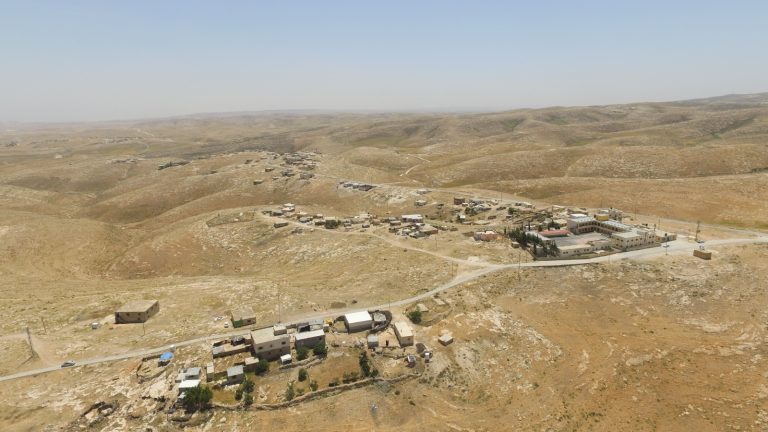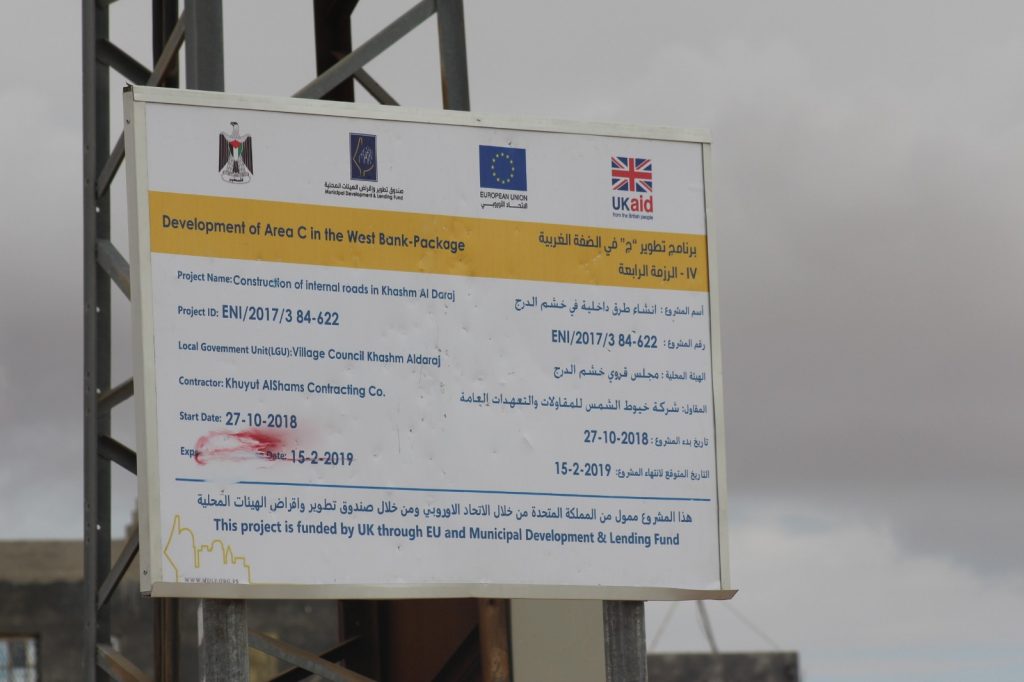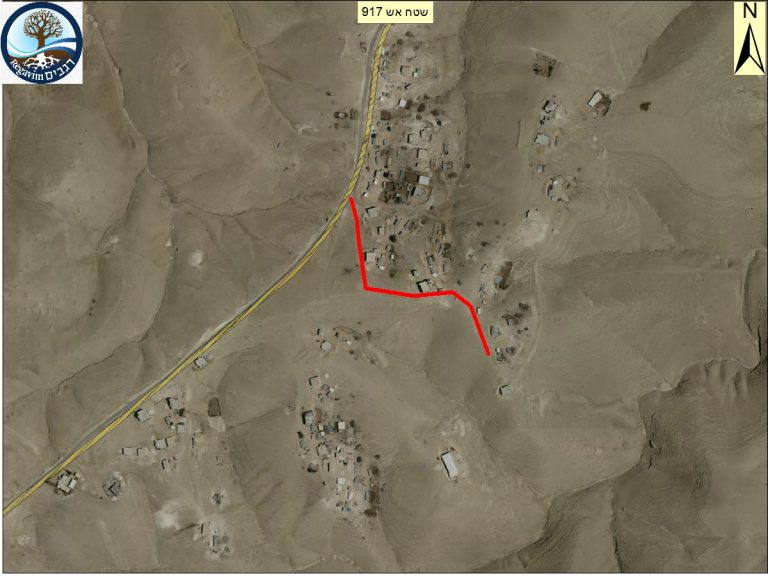
The State admits: Illegal construction for Arabs was whitewashed– but policy has changed
In the course of a High Court of Justice hearing on Regavim’s petition against the illegal Arab city growing in the Judean Desert, the State’s attorney admitted that in the past Arabs had been allowed to build without permits or planning approval.
On 20 November 2018, Israel’s High Court of Justice heard Regavim’s petition regarding an illegal Arab city growing on the grounds of IDF Training Range 917. The city, made up of 1,700 illegal structures – homes, schools, clinics, mosques – covers tens of thousands of dunams. The infrastructure that supports it all is spread over dozens of kilometers, thanks to generous funding provided by the European Union, the United Arab Emirates, Abu Dhabi, and other foreign interests.
The bottom line: A new Arab city has been born in an area of critical strategic importance, creating a contiguous Arab pale of settlement that stretches from the Arad Valley through Har Hebron and eastern Gush Etzion.

Background:
In the 1980s, a few Bedouin families lived in temporary structures that dotted the landscape of IDF Training Ground 917. Without any legal foundation or precedent, the Civil Administration demarcated a number of clusters and declared them”no go zones:” No law enforcement steps would be taken against structures within these areas, despite the fact that they had no building permits or municipal plans as required by law.
As if this weren’t bad enough, Regavim has documented more than 500 additional illegal structures built outside of these demarcated zones in the last few years – structures that “connect the dots” between the original clusters and create an uninterrupted band of Arab territory that stretches from the Arad Valley through Har Hebron and eastern Gush Etzion.
The State’s representative admitted in court that the “arrangements” that had been in force, which allowed illegal construction to continue unhindered, “constitute an historic reality, but do not reflect the government’s current policy regarding illegal construction. Nonetheless, because of the ‘seniority’ of the structures in question, the State contends that construction and regulation should be allowed to proceed.” Despite the irrefutable evidence presented by Regavim to the contrary, the State’s attorney argued that the Civil Administration is carrying out law enforcement procedures “according to its priorities,” outside of the demarcated non-enforcement zones.
Questions without answers:
“The State decided in the past that there is no law within these clusters – but even outside of their boundaries there is absolutely no enforcement activity,” said Attorney Avi Segal of Regavim. “At issue is an increase of hundreds if not thousands of percentage points in the rate of illegal construction. The State should be required to explain by what authority it allowed this chaos to begin in the first place. Now, the government sends its attorney to court to announce that someone has been hired to formulate a plan – but he is unable to say who this “someone” is, when this plan will be implemented, or where it will be implemented. The State has not demonstrated that any concrete steps toward cleaning up this mess have been taken. Whereas the court handed down very strict timetables for resolving the matter of a few paltry meters in structures that were built without permits elsewhere, in this case we are talking about 1700 illegal structures – and counting.”
The hearing, in a nutshell:
At the hearing, Chief Justice Hayut reprimanded the State’s attorney, who had stated over a year ago that “progress” had been made – but since then, has not produced a time-frame or operational plans. “The regulation team that is eventually chosen through the tender process now underway will be tasked with planning in any number of locations. What are the specific timetables regarding this particular area? How is it possible that the State does not have a plan of action?”
On the other hand, the Chief Justice required Regavim to add additional respondents to the petition: “There is no argument that many hundreds of illegal structures are involved,” said Chief Justice Hayut. “Residents of these illegal structures must be included as respondents to Regavim’s petition.” Attorney Segal explained that the residents have managed to avoid being served with papers, which were posted on the illegal structures instead. Furthermore, Regavim’s earlier attempts to serve residents with papers, as the court has required, were met with threats of physical violence.
Looking ahead:
In one month, the court will reconvene to consider the State’s plans for regulation and law enforcement, and Regavim will be there to continue the fight to protect Israel’s land resources.









